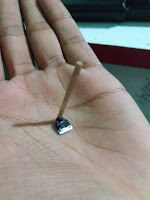Building My Dream Computer

A fter a long time, I'm going to start a project. Since I was very young, I always wanted to build a computer from scratch. Once I tried to do it with AVRs, but it didn't worked. While the covid-19 pandemic I could find some information about a CPU z80, which was used early computers. z80 CPUs are still available and, other chips like SRAMs, EPROMS can still find on eBay. So I decided to build my dream computer with this z80. So, I ordered some ICs with z80 two months ago, But I received them, in this year. So, I started my project in 2021. I have little experience with AVR and PIC microcontrollers, and Arduino. But I have never used a CPU like this before. So, my first step is trying to write some little programs with this CPU. To control Inputs, Outputs, and Memory, I decided to use an Arduino Board. z80 CPU has 8bit data bus and 16bit address bus. with the control signal pins, I need at least 30 IO pins. If I had an Arduino Mega board, I could easily control this CPU. Bu...


